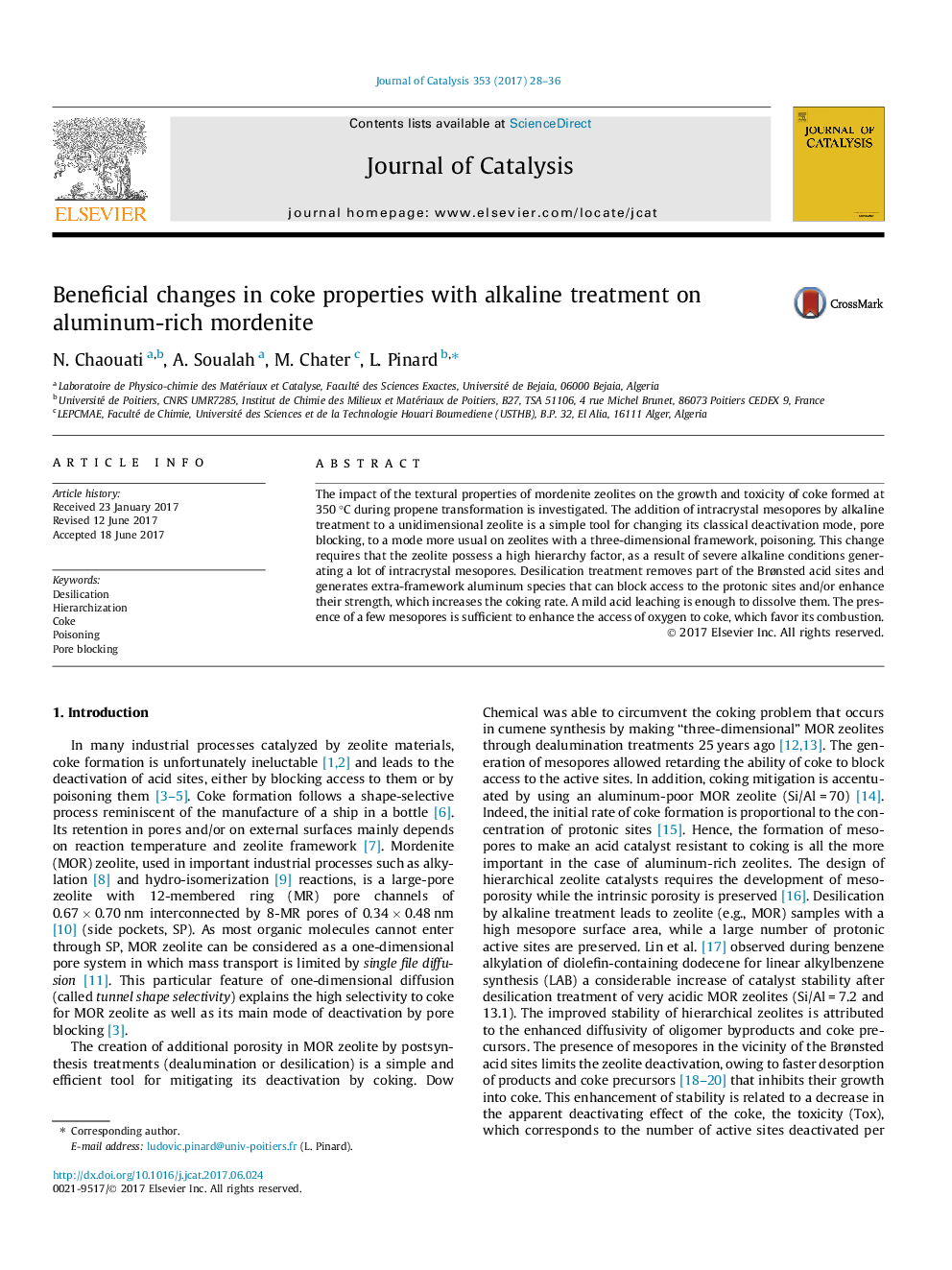| Article ID | Journal | Published Year | Pages | File Type |
|---|---|---|---|---|
| 6455542 | Journal of Catalysis | 2017 | 9 Pages |
â¢Desilication of mordenite zeolite modifies both porosity and acidic properties.â¢Presence of mesopores favors coke accumulation.â¢Desilication leads to a change in the coking mode: from pore blocking to poisoning.â¢This change requires that the mordenite zeolite possess a high hierarchy factor.â¢A high hierarchy factor requires severe alkaline conditions.
The impact of the textural properties of mordenite zeolites on the growth and toxicity of coke formed at 350 °C during propene transformation is investigated. The addition of intracrystal mesopores by alkaline treatment to a unidimensional zeolite is a simple tool for changing its classical deactivation mode, pore blocking, to a mode more usual on zeolites with a three-dimensional framework, poisoning. This change requires that the zeolite possess a high hierarchy factor, as a result of severe alkaline conditions generating a lot of intracrystal mesopores. Desilication treatment removes part of the Brønsted acid sites and generates extra-framework aluminum species that can block access to the protonic sites and/or enhance their strength, which increases the coking rate. A mild acid leaching is enough to dissolve them. The presence of a few mesopores is sufficient to enhance the access of oxygen to coke, which favor its combustion.
Graphical abstractDownload high-res image (71KB)Download full-size image
